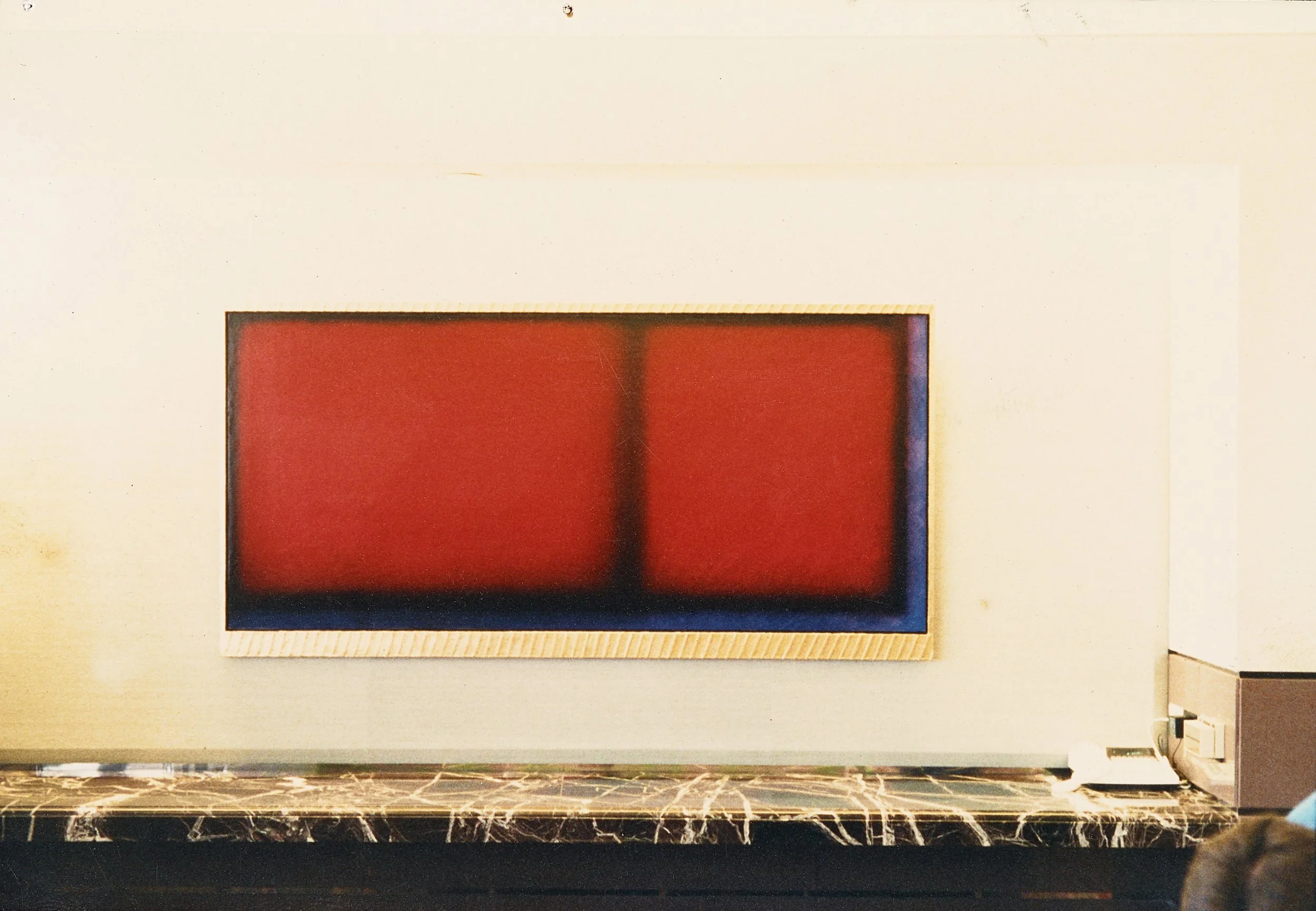ARTWORKS
Artworks
—
This site assembles highlights from the work of Eric Orr to offer an introduction to his practice. Orr was a conceptual artist whose experimentations with perception and the effects of the senses made him a central figure of the Light and Space movement that coalesced in Southern California in the 1960s.
Orr used the intangible qualities of light, spatial relationships, and sound as principal mediums in many of his works. He also frequently drew upon a palette of symbolically charged “elemental matter,” including gold leaf, lead, water, fire, human bones, radio parts, and meteorite dust, which he brought together, often in oppositional pairings, throughout his practice. His color field paintings evoke essences and voids, and draw from his fascination with and reverence for California’s bright white sunlight and its Pacific horizon line, the same ethereal light sources.
While the body of work presented here sorts into the conventional groupings of painting, sculpture, and installation, it’s important to note that Orr engaged with ideas from different creative modalities, producing artworks that explore similar concepts and materials in different contexts.
Orr’s work was heavily influenced by natural and scientific phenomena, like the eye’s response to low-light conditions, the mathematical properties of the Golden Ratio, or arc of the sun across the sky. He was also inspired by religio-spiritual architecture and iconography, such as the tombs of Ancient Egypt, as well as Buddhist spiritual philosophy.
This Has Nothing To Do With Doors, 1987, airbrushed oil paint on canvas, lead frame, and gold leaf, 73in x 43in,
SOUND IN THE SHAPE OF A PEAR
(1968 - 1969)
SOUND TUNNEL (1968 - 1969)
WALL SHADOW (1968)
ZERO MASS (1972 - 1973)
SUNRISE (1976)
SILENCE & ION WIND (1980)
GOLD AS PRIME MATTER(1979)
BLUE VOID (1981)
DOUBLE VISION (1982)
LIGHT SPACE (1985)
NOTHING SPECIAL (1982)
& WALL SLITS (1998)
BLUE VOID (1981)
ELECTRUM (1997)
This selection represents just some of the ambitious installations and site-specific artworks Eric Orr created from the early 1970s until his death in 1998. The architectural environment of an immersive installation appealed to Orr as a way to explore his formal concerns with silence, sound, light, and darkness as elemental mediums. To achieve the experiential effects and technical feats he desired, Orr often consulted and collaborated with architects, scientists, engineers, and philosophers.
Themes of dematerialization and transformation are central to Orr’s installations. “I want to make the best place on the planet,” he remarked of his intention for these artworks, “When you enter that place you’re completely changed—you experience ecstasy or something.”
Many of Orr’s installations were acquired by Count Giuseppe Panza, an important collector of modern and contemporary art, and then realized in exhibitions around the world. The Panza collection also includes plans for the few installations that were never executed.
Eric Orr explored the effects of light and space through painting to create the same meditative, transforming experience as one of his installation environments.
Orr referred to his paintings as “objects.” Instead of pigment on a flat picture plane, Orr’s early works in this genre featured dimensional surfaces assembled from his preferred palette of elemental materials, including lead, gold leaf, and bone, as well as his own blood, pulverized radio components, or meteorite dust.
Later paintings were created using an industrial-style spray gun to apply oil paints to the canvas. Orr’s artist frames used the same strips of lead he used in his sculptures. These color field paintings evoke essences and voids, but also draw from his fascination with and reverence for California’s bright white sunlight and its Pacific horizon line, the same ethereal light sources that illuminated Orr’s installation spaces.
L.A. Prime Matter, 1991
Eric Orr’s sculptures are also installations of a kind, built into and often engaged in a spatial dialogue with the surrounding architectural context. These artworks reflect Orr’s multidisciplinary practice which frequently blurred the distinctions between mediums. During his lifetime, the artist was commissioned to create sculptures for public spaces and private collections all over the world.
Fountains constituted an important component of Orr’s work in sculpture. “I have always viewed the creation of water sculptures as a way of connecting with the spiritual nature of man,” he wrote of his fountain sculptures. “It calms us due to the fact that we are mostly water. The spiritual resonance comes out of our ability to identify with the major aspect of this life-giving material.” Working with flowing water, a material that was constantly disappearing and re-emerging, also invited a new meditation on his concept of the void. Orr often collaborated with engineers to devise and construct the complex water systems these sculptures required.
Not all of Orr’s fountains were water-based, however. Some also emitted episodic bursts of flame or columns of fog, bringing these oppositional, elemental forces together in balance.















